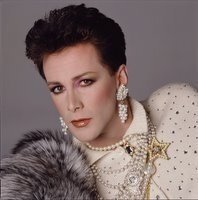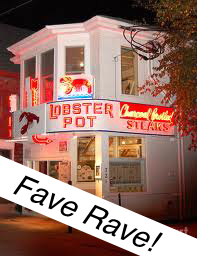Some DOs and DON'Ts of Champagne and wine....
/Darlings, starting in November, everyone is getting ready to share Holiday meals whether as a host or a guest! And wine and champagne play an important part in those traditions... Here are a couple of handy hints (of the Gazillions we could discuss!) that might come in handy when it comes to libations.
When you store wine or champagne in your house, the usual rule of thumb is to keep the bottles on their sides.... why? With wines, it's to keep the cork moist. If the bottle is upright for long periods of time, especially in low humidity (like dry heat in the Winter) it can begin to shrink allowing air into the wine and turning it into vinegar...or worse! Although wine connoisseurs may get picky about the exact angle for subtle chemical variations, the basic principle for the average home is to store the bottle horizontally.
As to champagnes, there are two schools of thought: upright or horizontal. The "upright" camp says that the cork and wire closure is firm enough and that exposure of the cork to the champagne over long periods of time can cause an adverse reaction eventually. The "horizontal" camp says champagne and wine corks should be treated the same way, with the cork in constant contact with the liquid.. I've always stored my champagne horizontally. It's the way I was taught, and saw everyone deal with as I grew up both in fine restaurants and in private homes. I DID learn one very important lesson over the years though, and from a friend of mine who was very high up at Veuve Clicquot. Never keep champagne stored in your home for years!! The champagne that is sold is ready for consumption! You don't need to add to its aging. Buy it and serve it in a timely manner. And store it on its side until you do in a dark place with a steady temperature...never too cold or too hot. Never in a garage or a basement that can fluctuate either in temperature or humidity extremes. And never store champagne in a refrigerator! Always chill champagne right before you serve it! ALWAYS!.... chilling champagne too long before opening can absolutely kill the flavor. A friend of mine had an extremely expensive bottle of champagne that he kept in his refrigerator for "that special occasion" which never seemed to happen. Finally after about a year, he found a perfect time to open it with a group of special guests.... the champagne certainly "popped", but the flavor was gone!! Absolutely GONE!...a flavor and festivity fiasco!
The so-called bouquet of wines is a very real part of the experience...some folks want to "air" the wine after they open it. But many connoisseurs claim that that initial bouquet should not be lost. It may in fact depend on the particular wine being served. I err on the side of always getting the wine into the glass and letting everyone experience it from the very start! Isn't exploring the wine with your guests part of the fun?? Let them decide how it "evolves". As to champagne, well the bubbles tell you everything you need to know, right? They seem to be saying, "Let's party!"... but a couple of tips: Uncork the bottle slowly! It may seem more macho to let that cork fly up at the chandelier, but all it really does is waste the fizz, and possibly some of that wonderful bubbly! You can get a nice satisfying whispery pop from the bottle that satisfies your onlookers and shows your confidence and appreciation for the finer things!
And that can go for your beverage accessories too; champagne flutes are much better than those flat champagne "coupes" from the 1950s, supposedly modeled on the breasts of Marie Antoinette. They were neither modeled on her breasts, nor are they good for champagne....the carbonation quickly disperses, the wine goes go warm, and they don't hold very much on top of it all! Feel free to toast with them and throw them into the fireplace! The long vertical shape of the flute is ideal for chill retention, fizz, and quantity! To add to the elegance, always hold your flute (and indeed ALL stemware!) by the the stem itself. Etiquette experts say that one should avoid ever holding any stemware by the "bowl" of the glass, even a "snifter" if one can manage it. Besides, the warmth of your hand on the champagne flute itself will warm the champagne...(I guess if it lasted that long in the glass!) And if you find yourself pouring champagne, a lovely trick to do it expertly without it foaming up and over the rim is to simply tip the flute at a 45 degree angle and pour slowly and steadily. You'll look ever so "in charge" as it smoothly fills the glass, foaming and tumbling, but never climbing out of control towards a tabletop disaster!! Amusez-vous, mes amis!!









